How to Use Visual Thinking Strengths in Autism Education
Unlocking Visual Strengths to Enhance Autism Educational Strategies

Harnessing the Power of Visual Thinking in Autism Learning Environments
Autistic individuals often process information differently, with a significant number demonstrating a strong preference for visual thinking. Recognizing and leveraging this natural strength can transform educational approaches, making learning more accessible, engaging, and effective. This article explores practical strategies for incorporating visual thinking into autism education, highlighting the benefits and methods to support communication, independence, and overall learning outcomes.
Understanding Visual Thinking in Autism
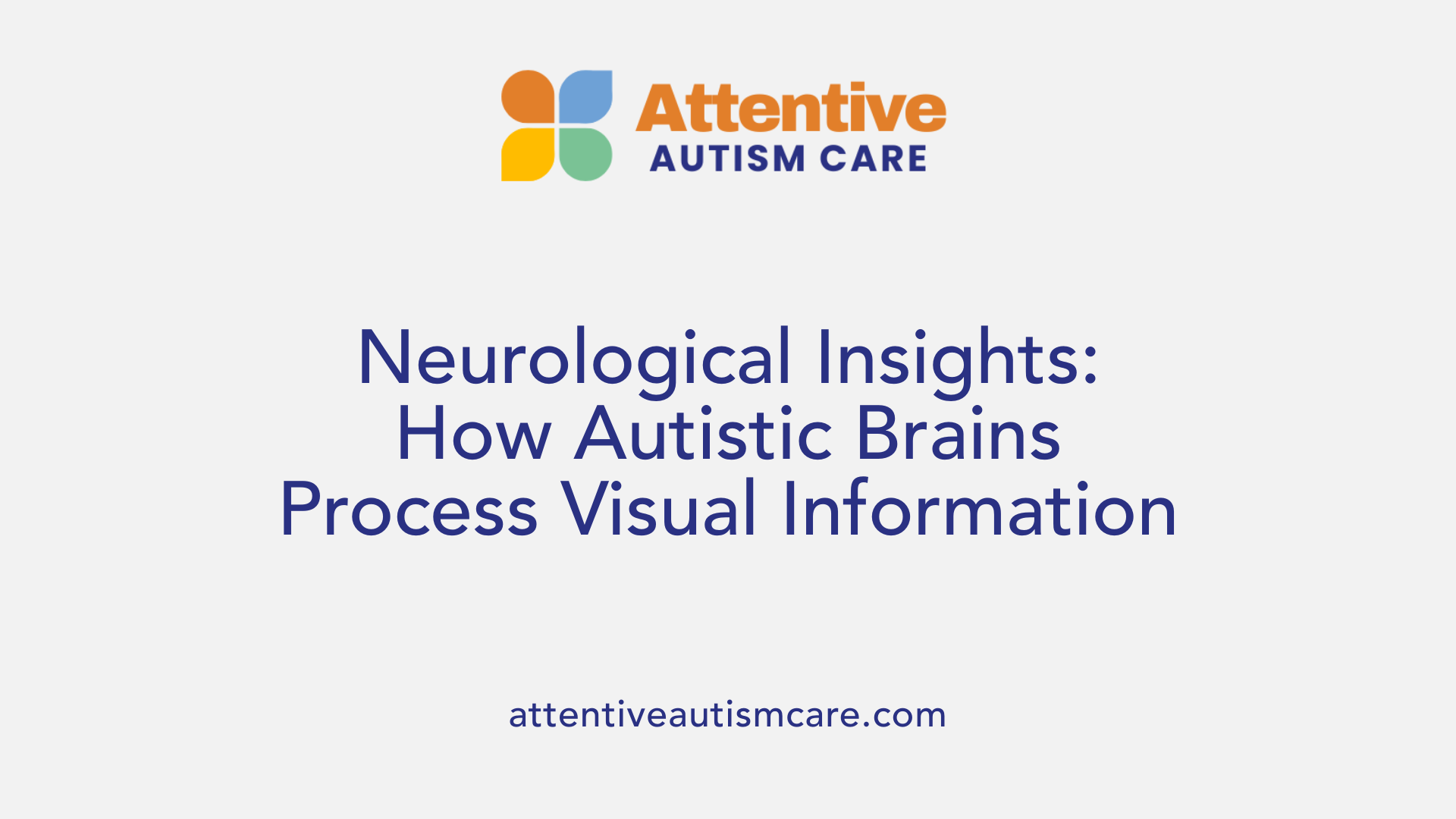
What is visual-spatial thinking and its role in autism?
Visual-spatial thinking is a way of understanding and solving problems through images and spatial reasoning. It involves creating mental pictures, understanding how objects relate to one another, and organizing information visually. In autism, many individuals tend to excel in this style of thinking, which helps them remember routes, solve puzzles, and organize objects.
Research shows that autistic brains are wired differently, often favoring visual processing over word-based tasks. Nancy Minshew and colleagues found that in autistic individuals, areas of the brain responsible for visual processing are more active when doing language tasks. This means they process information visually more efficiently, which is often a strength.
Neurological basis of visual strengths in autistic individuals
The neurological differences in autistic brains support enhanced visual skills. For example, Dr. Temple Grandin, a renowned scientist on the autism spectrum, describes her thought process as 'thinking in pictures.' Her success as a scientist is closely linked to her vivid visual thinking abilities.
Studies indicate that in autistic people, the brain’s visual regions are more engaged, allowing them to excel in recognizing patterns, understanding complex systems, and working with spatial relationships. These visual strengths form an important part of their cognitive profile.
Characteristics of visual thinkers, including creativity and pattern recognition
Visual thinkers are often highly creative. They excel in recognizing visual patterns, understanding systems, and solving spatial problems. This makes them naturally skilled at tasks like pattern recognition, visual search, and innovative thinking.
Many autistic individuals are also good at rote memory, which helps them remember words, routines, and numbers. Their ability to focus on visual details and interest-based topics can be harnessed for creative projects and problem-solving.
Supporting their strengths involves designing environments and educational methods that rely on visual aids, such as schedules, step-by-step images, and visual reminders. These strategies not only enhance learning but also help reduce anxiety and build independence.
| Trait | Explanation | How it benefits autistic individuals |
|---|---|---|
| Visual-spatial skills | Using images to understand concepts | Recognizing patterns, understanding systems |
| Pattern recognition | Identifying visual arrangements and relationships | Excelling in problem-solving and creativity |
| Memory | Rote and visual memory | Remembering routines, words, numbers |
Leveraging visual thinking is essential for creating inclusive educational and social environments that recognize and build on the natural abilities of autistic individuals.
Implementing Visual Supports in Daily Routines and Learning
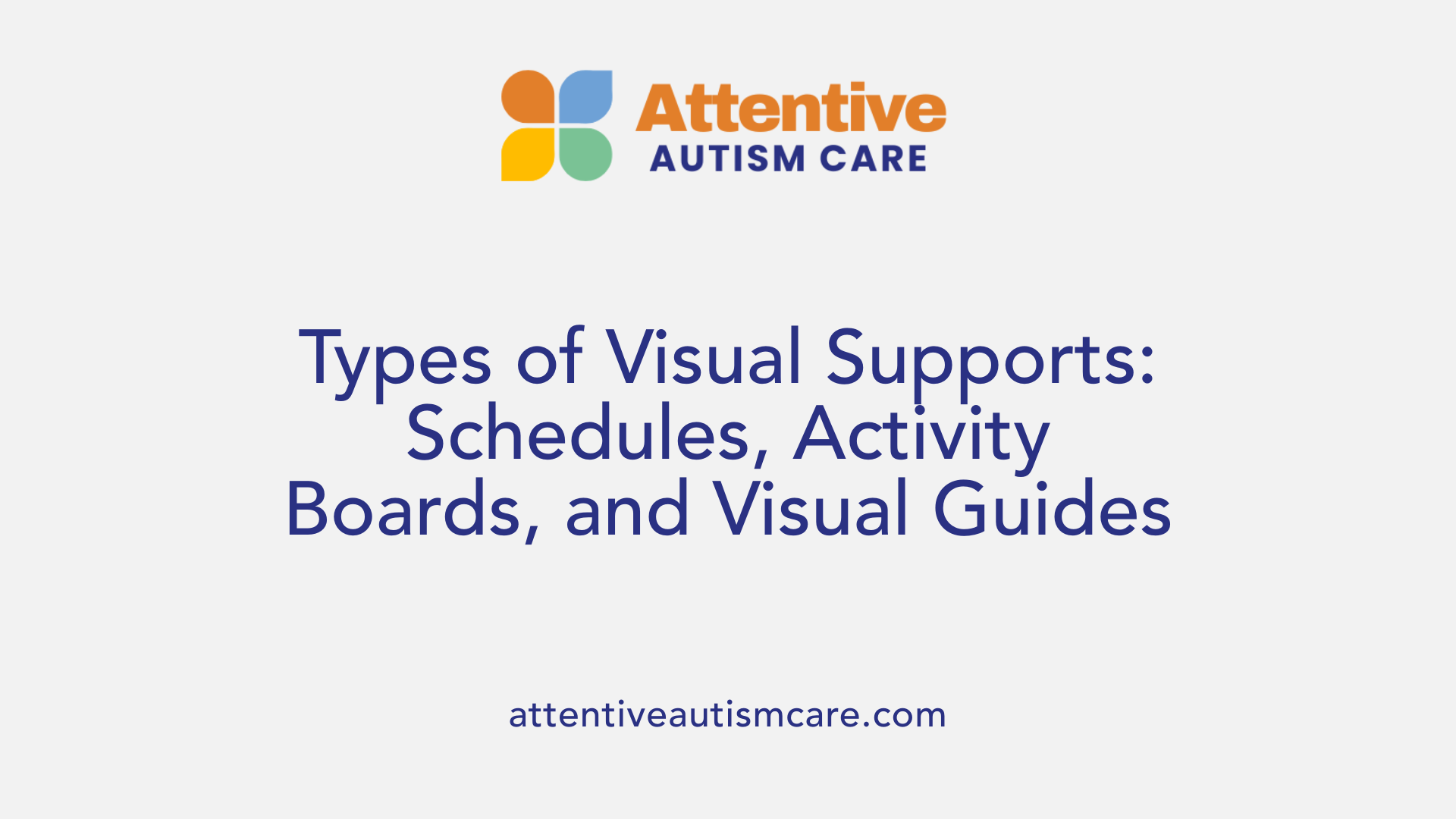
What practical strategies can be used to implement visual thinking in teaching children with autism?
To effectively incorporate visual thinking strategies in teaching children with autism, educators can utilize a variety of visual supports tailored to each child's unique needs. These include visual schedules that outline daily routines, social narratives that explain social situations, choice boards that give options for activities, and picture symbols that represent different tasks.
Consistency is crucial—using these supports regularly helps children predict what will happen next, reducing anxiety. Collaborating with families and special education professionals ensures that the visual tools are relevant and effective for the child's developmental level.
Visual cues can be integrated into transitions between activities and during everyday routines. For instance, using visual activity completion signals or mini-schedules can help break down complex tasks into manageable steps, fostering independence and self-regulation.
It’s important to adapt and update visual supports periodically, reinforcing their relevance. This practice aids children in generalizing skills across various settings like home, school, and community, ultimately supporting their learning and social integration.
Types of visual supports like visual schedules, activity boards, and step-by-step visual guides
- Visual Schedules: Outline daily activities and routines, providing structure.
- Activity Boards: Show choices and available options to foster decision-making.
- Step-by-Step Guides: Break down complex tasks into visual steps to aid in task completion.
Personalization of visual tools to match developmental and individual needs
Every child with autism has unique strengths and challenges. Visual supports should be personalized, using images and symbols that the child can easily understand and relate to. Adjusting complexity—such as using simple pictures for younger or less skilled learners and more detailed images for older children—ensures the tools are accessible.
Involving families in customizing these supports respects cultural differences and daily routines, making the tools more effective in promoting understanding and independence.
Role of visual aids in reducing anxiety and enhancing independence
Visual aids can significantly decrease uncertainty and anxiety by providing clear expectations. When children know what to expect, they feel more in control, which reduces stress. These supports also encourage independence by enabling children to complete daily routines or tasks with minimal verbal prompts.
Using visuals like step-by-step instructions or visual timers helps children manage their time and activities better, leading to greater confidence and autonomy in both educational and home environments.
| Support Type | Purpose | Best Practice | Examples |
|---|---|---|---|
| Visual Schedules | Organize routines and transitions | Personalize and update regularly | Daily activity charts, routine sequences |
| Activity Boards | Promote choice and decision-making | Match options to child's preferences | Choice boards for activities or snacks |
| Step-by-Step Visual Guides | Break complex tasks into manageable parts | Use clear images and minimal text | Puzzle assembly, hygiene routines |
Leveraging visual supports effectively can transform daily learning and routines for children with autism, helping them flourish with confidence and independence.
Teaching Methods and Visual Strategies for Autism Learning
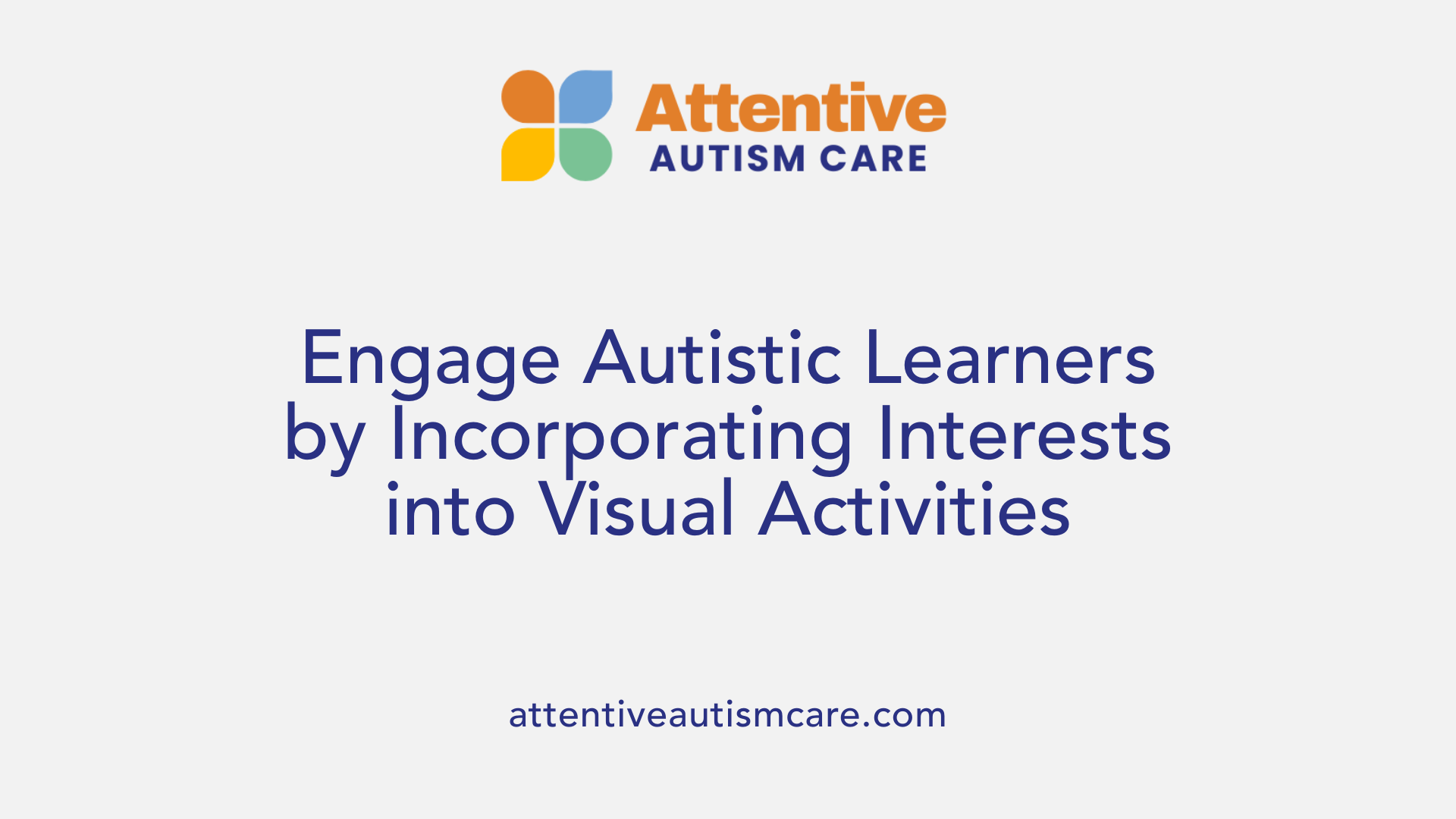
How can educators leverage visual thinking to support communication and learning for autistic learners?
Autistic individuals often process information visually, making visual strategies highly effective for education and communication. Educators can use picture schedules, choice boards, and visual cues to create a clear and predictable learning environment. These tools help children grasp routines, anticipate transitions, and express their needs more easily.
Visual aids such as photographs, symbols, and social stories can enhance understanding of language, emotions, and social norms. For example, visual timers can help manage time and reduce anxiety, while emotion charts can support emotional recognition.
Personalized visual materials tailored to each child's developmental level and interests can boost engagement and motivation. When children see their interests incorporated into visual supports, they are more likely to participate actively and retain information.
Using visual supports in everyday activities not only improves comprehension but also fosters independence. Children learn to follow sequences, understand expectations, and communicate effectively in a way that suits their cognitive strengths.
Incorporating interests and strengths into visual activities to boost engagement
Integrating a child's special interests into visual activities makes learning more appealing and meaningful. For instance, if a child loves trains, using train pictures in schedules and activity boards can encourage participation.
Strengths in visual search tasks and pattern recognition can be harnessed through puzzles, matching games, and visual sorting activities. These methods not only align with their cognitive strengths but also develop their skills further.
Creating a visual environment that highlights these interests supports motivation and helps children develop various skills, including play, numeracy, and social interaction.
Utilizing technology like tablets and apps to support visual learning
Modern technology offers versatile tools to support visual learners with autism. Tablets and smartphones loaded with educational apps can display visual content that is customized to individual needs.
Video modeling apps demonstrate tasks visually, allowing children to learn routines such as brushing teeth or crossing the street independently. These visual demonstrations can be replayed as often as needed, reinforcing learning.
Apps also allow for the integration of children’s interests and provide engaging, interactive experiences that cater to visual strengths. Using technology helps create a stigma-free environment, promoting independence and confidence in high school and beyond.
| Strategy Type | Examples | Benefits |
|---|---|---|
| Visual Modeling | Video demonstrations, picture step-by-step guides | Improves understanding and independence |
| Visual Prompts | Choice boards, visual cues for choices | Reduces frustration and builds communication |
| Technology Support | Educational apps, social stories on devices | Engages visual strengths and supports skill development |
The Impact of Visual Thinking on Independence and Skill Development
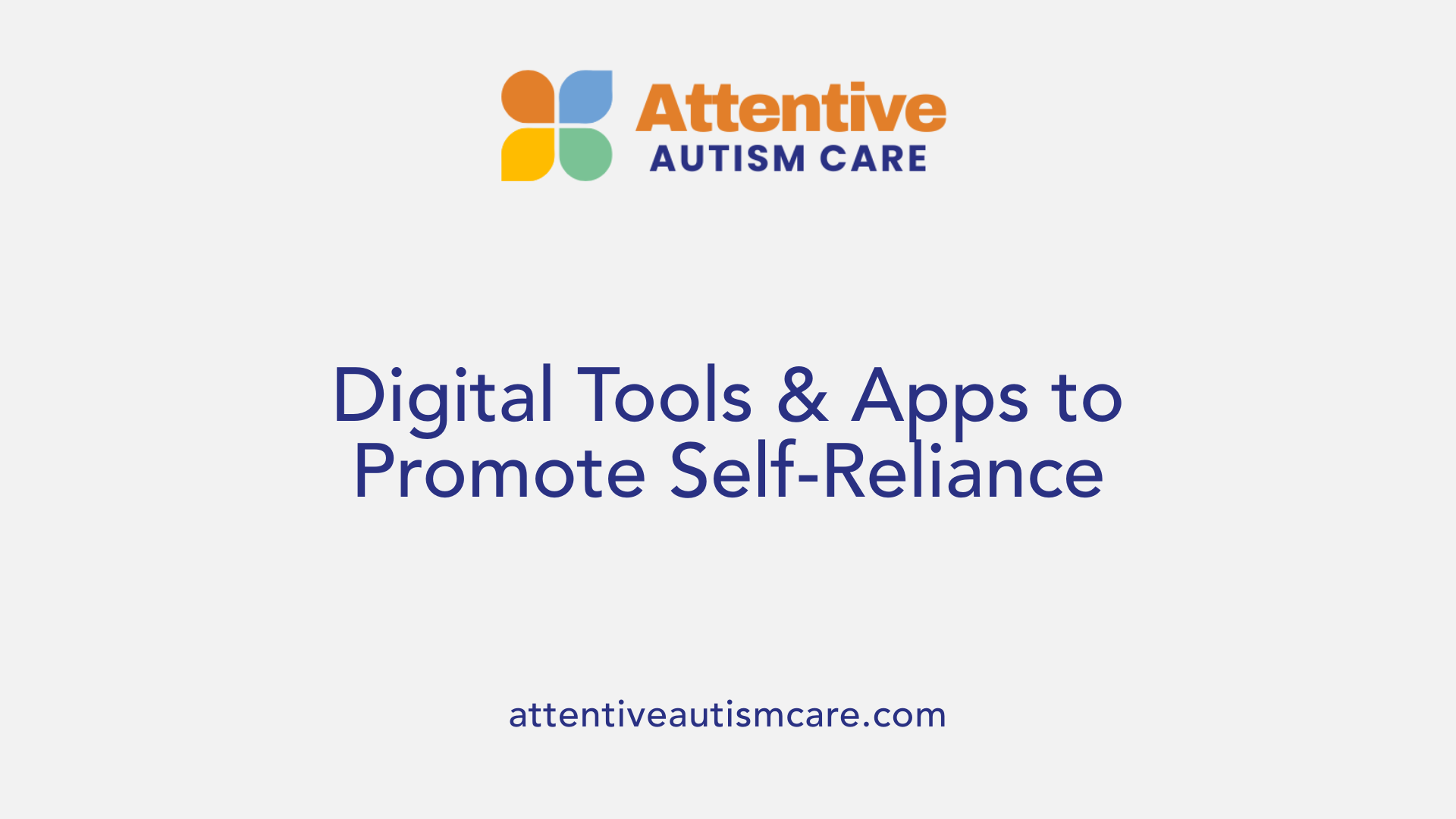
How does visual thinking enhance independence and learning among autistic students?
Visual thinking plays a significant role in helping autistic individuals become more autonomous in their daily lives and learning processes. Many autistic individuals naturally excel in mental imagery, pattern recognition, and understanding spatial relationships. These abilities allow them to grasp routines and tasks more concretely through visual representations.
Using visual supports such as schedules, alarms, or step-by-step photo guides creates clear and predictable cues. These visual tools help reduce anxiety about unfamiliar routines, making transitions and daily activities smoother. For example, visual schedules help children see what is upcoming in their day, reinforcing their understanding and decreasing dependence on verbal reminders.
Video modeling further enhances independence by demonstrating specific actions visually. Watching someone perform a task—like brushing teeth or packing a bag—can help children imitate and learn these routines without needing constant verbal instruction.
In addition to traditional tools, technology like iPads and smartphones has revolutionized support strategies. These devices provide accessible, customizable visual aids that can be easily updated and used across different environments. They enable individuals to manage self-care, organize tasks, and navigate new settings with increased confidence.
This reliance on visual cues aligns with the strengths seen in many autistic individuals. It helps them develop self-reliance, improve problem-solving skills, and bolster self-esteem. When their perceptual strengths are acknowledged and supported through visual methods, autistic students often find education and daily living less overwhelming and more engaging.
How can technology and digital tools promote independence?
Digital tools like apps for task management, visual timers, and social stories are tailored to reinforce routines and teach new skills. These tools are versatile and adaptive, allowing users to personalize content based on their abilities and needs.
For example, apps that utilize images and audio cues can help children learn to follow multi-step instructions at their own pace. Such platforms also encourage independent task completion by providing immediate visual feedback. Moreover, the widespread availability of devices makes consistent support possible both at school and home.
Building confidence through visual mastery of routines and tasks
Mastering routines visually enhances confidence by providing a tangible sense of achievement. As children successfully navigate tasks using visual supports, they develop a sense of competence. This progress further motivates them to try new activities and take on increasing responsibilities.
The emphasis on visual mastery promotes a positive cycle of learning: clear, accessible visual aids lead to successful performance, which builds trust in their abilities and fosters independence.
| Support Method | Description | Additional Benefit |
|---|---|---|
| Visual schedules | Daily routines depicted with images or icons | Reduces anxiety, promotes routine adherence |
| Video modeling | Demonstrating tasks visually with videos | Enhances imitation and skill learning |
| Digital apps | Customized task management and social stories | Promotes self-directed learning |
| Visual timers | Clocks or countdowns with visual cues | Improves time management and planning |
Integrating these visual and technological strategies aligns with the ways many autistic individuals perceive and understand their world. By leveraging their innate strengths, caregivers and educators can foster greater independence and confidence, contributing to better life skills and overall well-being.
Creating a Visual-Friendly Learning Environment and Supporting Self-Regulation

How can visual thinking enhance independence and learning among autistic students?
Autistic individuals often process information differently, with a strong inclination toward visual thinking. This means they understand and interpret the world through images, spatial relationships, and patterns. By leveraging these strengths, educators and caregivers can significantly boost independence and learning.
Implementing visual supports such as visual schedules, activity boards, and step-by-step photo guides helps students grasp routines and expectations clearly. For example, visual schedules enable students to see their daily activities, which fosters autonomy by allowing them to manage transitions without constant verbal prompts. This reduces anxiety and builds confidence.
Technology plays a crucial role in enhancing independence. Devices like iPads and smartphones offer versatile platforms for visual cues, reminders, and instructional videos. Video modeling, in particular, demonstrates tasks visually, making it easier for students to imitate and learn new skills.
Research from the UNC’s Frank Porter Graham Child Development Institute indicates that many high school students with autism excel in mental imagery, often describing their reasoning as a series of pictures. This suggests that aiding their visual processing can lead to better comprehension and execution of daily tasks.
Creating an environment that prioritizes visual clarity—such as organized, structured spaces—further supports their natural inclinations. Visual signage, clearly defined areas, and minimal clutter help prevent sensory overload and make navigation intuitive.
Overall, integrating visual tools and thoughtfully structuring environments taps into autistic individuals' visual strengths, enabling them to become more self-reliant, confident, and prepared to handle everyday challenges.
Harnessing Visual Thinking for Inclusive and Effective Autism Education
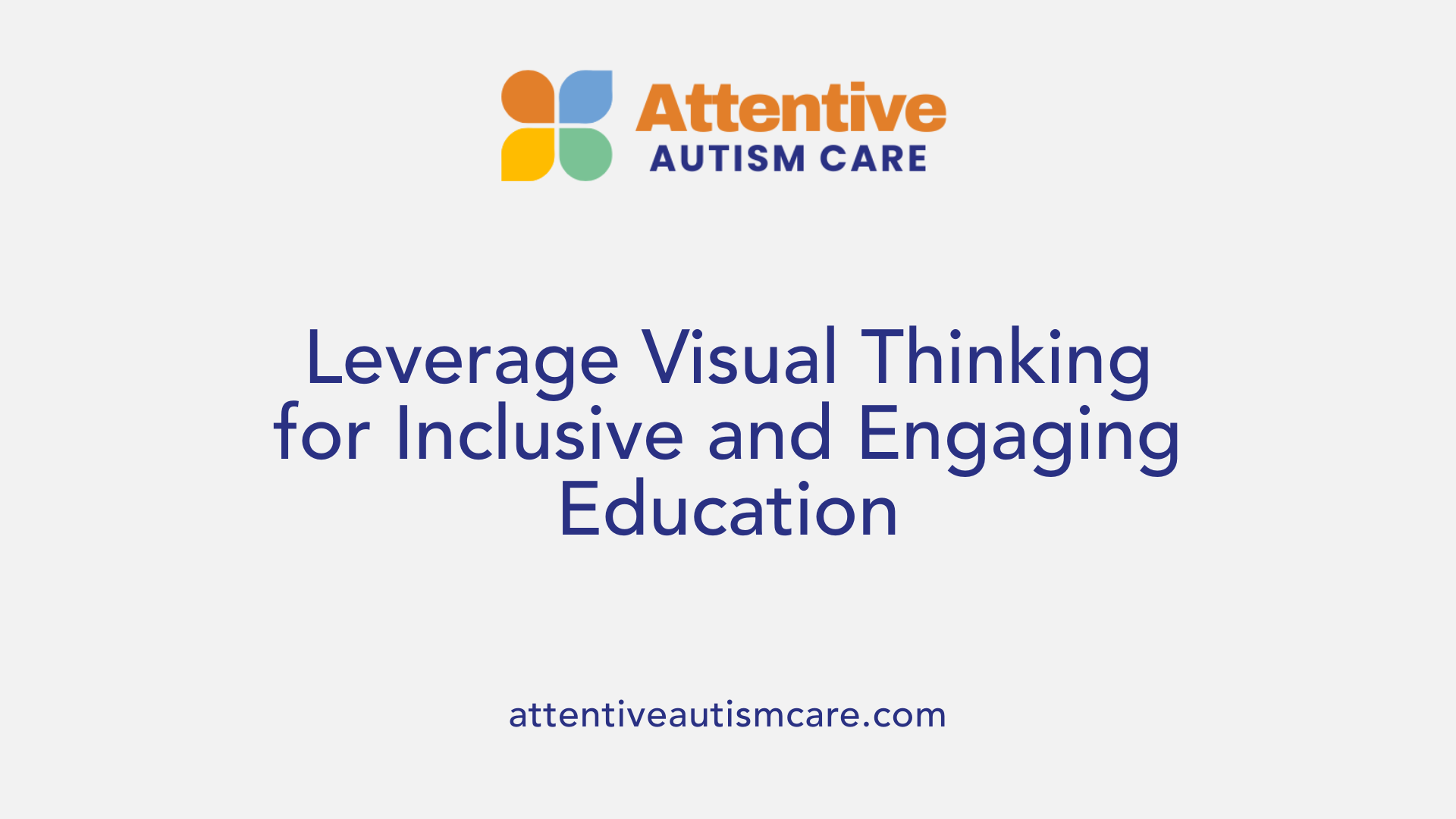
What are the benefits of using visual thinking approaches for autistic students?
Implementing visual thinking strategies can greatly benefit autistic students by aligning educational methods with their natural modes of learning. Many autistic individuals process information more effectively through images, shapes, and spatial relationships than through words or sounds. Using visual supports such as picture cards, visual schedules, and social stories helps clarify routines and social cues, reducing misunderstandings and anxiety.
These approaches foster independence by allowing students to follow daily routines and complete tasks with less verbal prompting. This not only builds confidence but also minimizes stress, supporting emotional well-being. Additionally, visual methods stimulate creativity and problem-solving skills by encouraging students to think visually and spatially.
In classrooms and daily settings, integrating visual tools makes learning more accessible and engaging. For instance, visual schedules can guide students through their day, visually demonstrating what comes next. Video modeling shows how to perform tasks step-by-step, improving skill acquisition.
Research indicates that many high school autistic students have superior mental imagery capabilities and excel in pattern recognition and spatial reasoning, which visual strategies can harness. Overall, these methods leverage autistic strengths to enhance understanding, communication, and independence.
Adopting a Visual-Centric Approach in Autism Education
Harnessing the natural visual strengths of autistic individuals not only aligns teaching methods with their cognitive preferences but also fosters greater independence, confidence, and success in learning. By integrating visual supports, tailored tools, and environmental structuring, educators can create inclusive and effective learning experiences. Emphasizing the benefits of visual thinking—such as improved communication, reduced anxiety, and enhanced problem-solving—this approach promises a more equitable educational landscape that recognizes and builds upon the inherent strengths of learners with autism.
References
- Visual Thinking and Autism: A Deep Dive into a Unique ...
- Thinking and learning strengths in autistic children
- Visual thinking and autism: Understanding cognitive styles
- Learning Styles & Autism
- Superior Visual Thinking May Be Key to Independence for ...
- What are visual strategies for autism
- Visual Thinking and Autism: A Deep Dive into a Unique ...
- "Visual Strategies for Students with Autism Spectrum ...
- Visual thinking strategies for individuals with autism ...
- Superior Visual Thinking May Be Key to Independence for ...



































































































